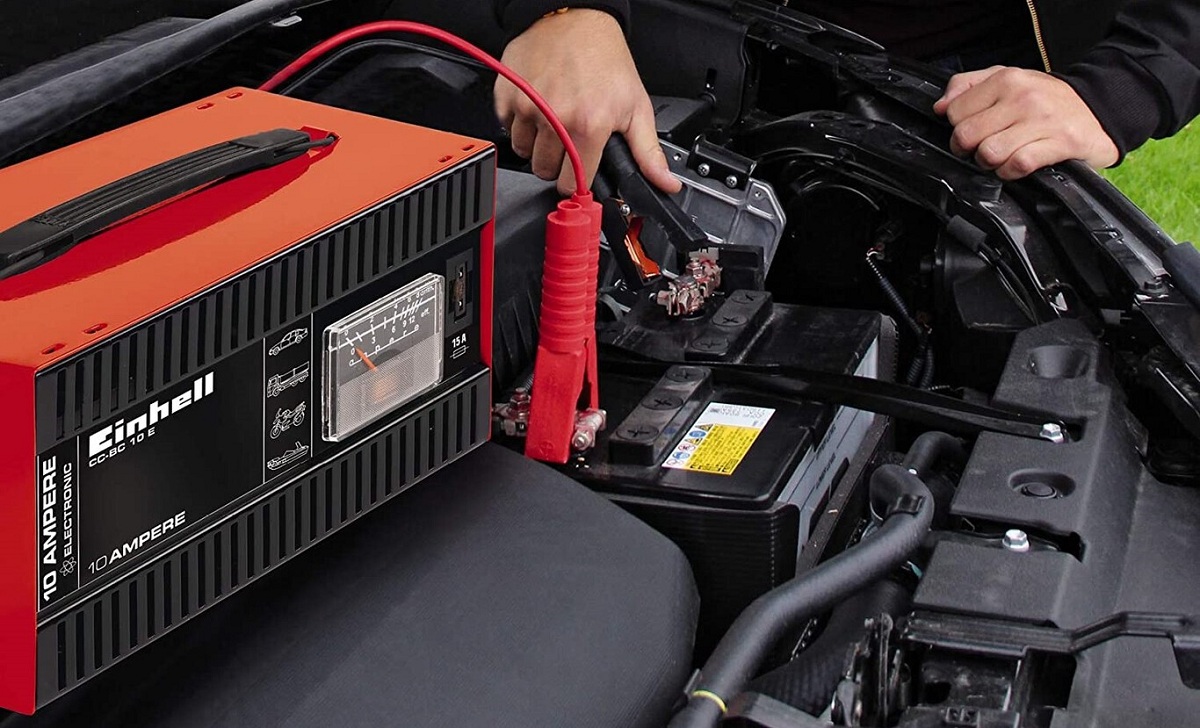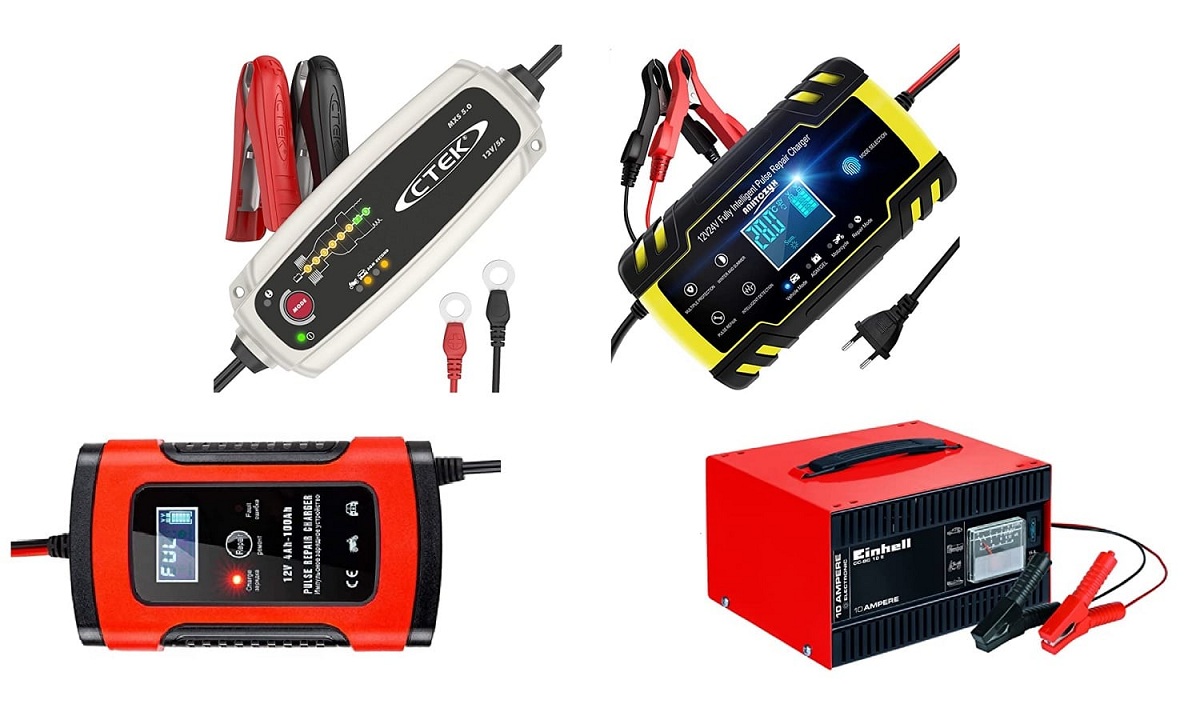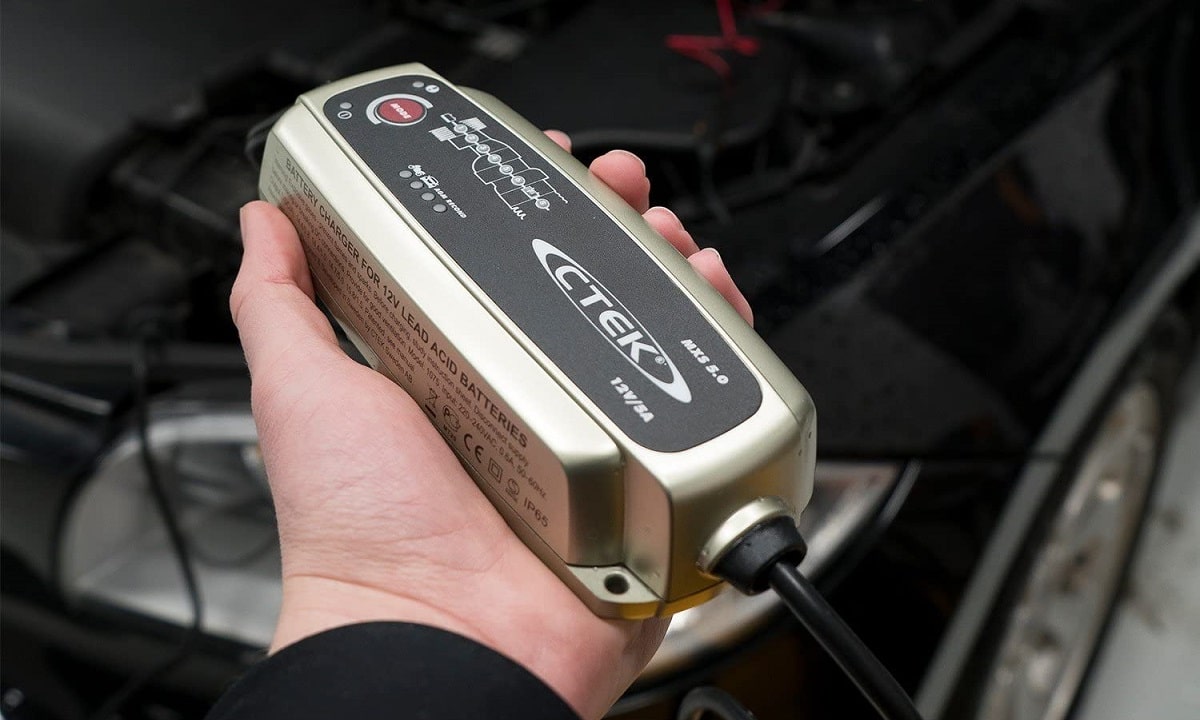
Un Battery charger is a device used to charge a discharged battery by circulating direct current with a voltage slightly higher than the voltage of the battery itself, in the opposite direction to the discharge current. In this way, the reconversion of the lead sulfate in the plates is achieved, returning the sulfuric acid to the electrolytic solution, which increases its specific weight.
In this article we are going to tell you everything you need to know about the battery charger, its features and how to choose the best one.
Battery charger operation

Since the available energy source was an alternating current network, selenium rectifiers or rectifiers made up of silicon diodes were used, which allowed the passage of current in a single predetermined direction, such as the direction of only positive half waves. Since the network voltage value is significantly higher than required, A transformer is used to reduce the voltage to a value between 13 and 18 V. A varistor (variable resistor) is installed in series with the circuit and its task is to regulate the strength of the charging current.
By connecting the positive pole of the charger to the positive pole of the battery, the negative pole to the negative pole and the primary of the transformer to the network, the battery is about to be charged. This process continues for as long as it takes for the electrolyte to reach the ideal specific gravity, or until bubbles begin to appear in solution (the effect due to the release of hydrogen or oxygen near the positive and negative plates, as the charging current). is greater than the reduction in the small amount still present on the current plates required for lead sulfate).
Full and partial loads

To achieve a full charge, the amperage must be limited; charging too fast can cause the plate to heat up and bend. Therefore, A varistor is required to measure the intensity of the current.
The device also has an ammeter to constantly monitor the strength of the charging current and a voltmeter to know exactly what the voltage is at the battery terminals.
Some types of battery chargers are more complex than those described, with different powers (45-60 W) and operating characteristics. The type used in electrical workshops is designed to be able to charge several batteries at the same time, connected together in series or in parallel depending on the situation. Since the charging time cannot be too long, it is necessary to control not only the time and intensity of the current, but also the specific gravity of the electrolyte. To reduce the need for control, the electronics successfully implemented a special type of rectifier, the operation of which is automatically interrupted once full charge is reached.
They are really nothing more than voltage sensitive devices at the battery terminals that work in such a way that the battery charger automatically turns off once the full charge voltage is reached.
The device also has an ammeter to constantly monitor the strength of the charging current and a voltmeter to know exactly what the voltage is at the battery terminals.
Some types of battery chargers are more complex than those described, with different powers (45-60 W) and operating characteristics. The type used in electrical workshops is designed to be able to charge several batteries at the same time, connected together in series or in parallel depending on the situation. Since the charging time can not be too long, it is necessary to control both the time and intensity of the current and the specific gravity of the electrolyte.
To reduce the need for control, the electronics successfully implemented a special type of rectifier, the operation of which is automatically interrupted once full charge is reached. They are really nothing more than voltage sensitive devices at the battery terminals that work in such a way that the battery charger automatically turns off once the full charge voltage is reached.
Types of battery charger

We can mainly distinguish three types of traction battery chargers:
- Wo wa charger
- High Frequency (HF) Chargers
- Multi-voltage charger
We will describe each type in detail.
Wo wa charger
Wo-Wa (dual slope charging) is a two-stage combined charging method that provides constant voltage and current through which faster charging is provided in a controlled manner.
It has been the most common method for many years, and although chargers of this type have exceeded their goals, they are increasingly being replaced by newer and much more efficient high-frequency chargers. Many (75% vs. 90%)
High Frequency (HF) Chargers
High-frequency chargers are increasingly used and little by little they will gain a foothold in the market due to their high performance, characteristics and low energy loss during charging.
It is true that it is more expensive than a traditional charger, but this extra cost is more than compensated by its longevity and lower cost of electricity because it converts much better and does not generate voltage when starting load peaks (which persist over time), so they are a great investment.
Multi-voltage charger
As the name suggests, multi-voltage chargers provide the ability to charge batteries at different voltages (mainly 12V, 24V, 36V and 48V), making them very versatile products that can be adapted to the different charging needs that may arise. Overtime.
Its most obvious counterpart is having to be very aware of the type of battery to be charged and the required voltage, since in the worst case a bad configuration can cause irreparable damage to the battery (as occurs in traditional battery chargers). that way).
Unlike starter batteries, traction batteries power electrical circuits or mechanical components, such as electric vehicles, to keep them in continuous motion for long periods of time. They have been widely used in the industrial world over the years, as stackers or forklifts, offering companies that choose this type of machinery a great logistical advantage.
I hope that with this information you can learn more about the battery charger and its features.